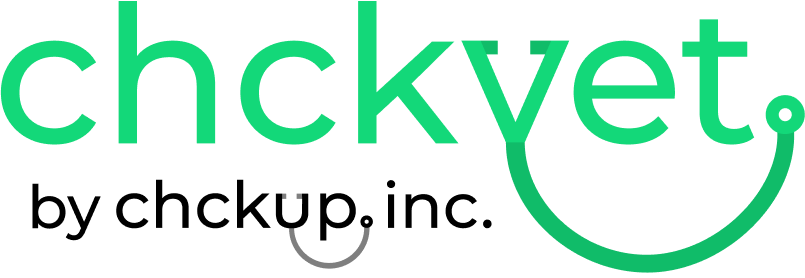Table of Contents
How Veterinary Procedure Time Impacts Your Practice
Long Wait Times
Fewer Appointments
Low Production
How To Manage Veterinary Treatment Times for a Thriving & Productive Practice
Utilize Online Scheduling
Analyze Important Metrics
Set Daily and Monthly Production Goals
Switch to 10-Minute Increments
Contact Chckup Today
How Does Procedure Time Affect Your Veterinary Practice’s Scheduling?
Elliott Greenwood
May 19, 2023 · 4 min read

Are your procedure times where you want them to be? Far too many practices don't realize the negative impact that veterinary treatment times have on their scheduling practices, quality of care, and client satisfaction.
If you’re not actively managing your schedule and analyzing key procedure metrics, you could be adversely affecting your veterinary practice.
Let’s start by discussing how veterinary procedure times that run too long could impact your practice.
How Veterinary Procedure Time Impacts Your Practice
The amount of time it takes to complete each procedure can profoundly affect the overall success and productivity of your practice.
For example, I spoke with an associate veterinarian who mentioned that there was this $300 tool that she was asking the practice owner for. This $300 tool could cut down the time it takes to do a particular task from 5 minutes down to 1.
All it takes in this scenario is 4-6 appointments and this practice has now freed up enough time to see another pet in their day. That means one happier client and more money for this practice.
It becomes far too easy to have a sloppy mindset when it comes to scheduling and saving time. You also end up with unhappy clients when that happens.
Long Wait Times
One of the worst qualities a veterinary practice can have is ultra-long wait times for pet owners.
If your veterinary treatment duration rates are higher than they should be, the inevitable result is a packed waiting room and disgruntled clients.
You should keep average times for procedures as low as possible without sacrificing the quality of care.
Fewer Appointments
If a veterinary procedure takes longer than usual, you will have less time for other client appointments.
Of course, the key to a thriving and productive veterinary practice is effective time management, not overscheduling or cramming as many clients in each workday as possible.
The tradeoff is that if you have to cancel on clients because you don’t have enough time to fit in their veterinary treatment, it will result in lower profits and unhappy clients.
Low Production
Low production rates are another common impact of letting your veterinary procedure times run over.
In particular, it’s crucial to have a good mix of low-ticket treatments like vaccinations and high-ticket procedures like surgeries or dental appointments.
Improving your time management skills regarding client procedures is one of the best ways to run a thriving veterinary practice.
How To Manage Veterinary Treatment Times for a Thriving & Productive Practice
Let’s discuss some actionable advice and expert tips you can leverage to keep procedure times down and productivity up.
Utilize Online Scheduling
Switching to systems like online scheduling is one of the best ways to ensure that your procedures and treatments stay within their appointed time frames.
For example, one solution you can use is Chckup’s online scheduling. It allows you to streamline your scheduling practices, prevent double bookings, and update schedule changes in real time. The best part is, clients can schedule online any time, anywhere.
Analyze Important Metrics
How can you determine if your veterinary treatment times are running over? You can start by measuring and analyzing key metrics.
For example, you may want to spend two weeks recording the timeframes for each type of treatment and procedure. Take note of which appointments take the longest?
By gaining this valuable data, you can better understand how to mix your workday to maximize time efficiency and production.
Set Daily and Monthly Production Goals
Your veterinary practice should focus on increasing cost efficiency while decreasing anxiety and stress for your staff and the front desk.
For example, you can do this by setting daily average production goals that lead to higher monthly and annual goals. Here’s how you can do it:
First, determine your specific monthly or annual production goals by the number of available working days within the particular period.
Take that number and then decide how much growth you want for the following months and year: i.e., 10%, 15%, etc.
Now, you have a hard number that can act as a guide. As we said earlier, that will make it much easier for your staff to determine a good mix between low-profit treatments like cleanings and high-profit procedures like root canals.
You can use Chckup’s Metrics and Reporting to easily set goals and review your data. No need to run your own reports. Everything is already built out for you.
Switch to 10-Minute Increments
Although many veterinary practices use 15-minute increments for their client scheduling, you may want to consider switching to 10 minutes. It keeps your time management skills sharper and helps you cut appointment times.
Consider this: If you have three veterinary assistants who manage to save even 15 minutes each workday during the year, your practice can benefit from 500 extra working hours annually!
Contact Chckup Today
Are you interested in more ways that Chckup can help your practice and lower veterinary procedure time?
Check out our blog to learn about the different types of veterinary practice scheduling, tips for improving productivity, and how to streamline your workday.
Reach out to us and schedule a demo of our advanced software solutions today.
Are you a veterinary professional?
If you're in the veterinary field and you're interested in giving your practice the extra hands it desperately needs, book an 8 minute demo with Chckvet. Our platform helps busy practices handle call overload, boost revenue per client, and increase client satisfaction by providing actionable insights and easy-to-use technology to help you stay on top of everything.
Book an 8 minute demo
Looking for a better solution?
Discover how Chckvet can help fill your schedule and give your team their time back.
